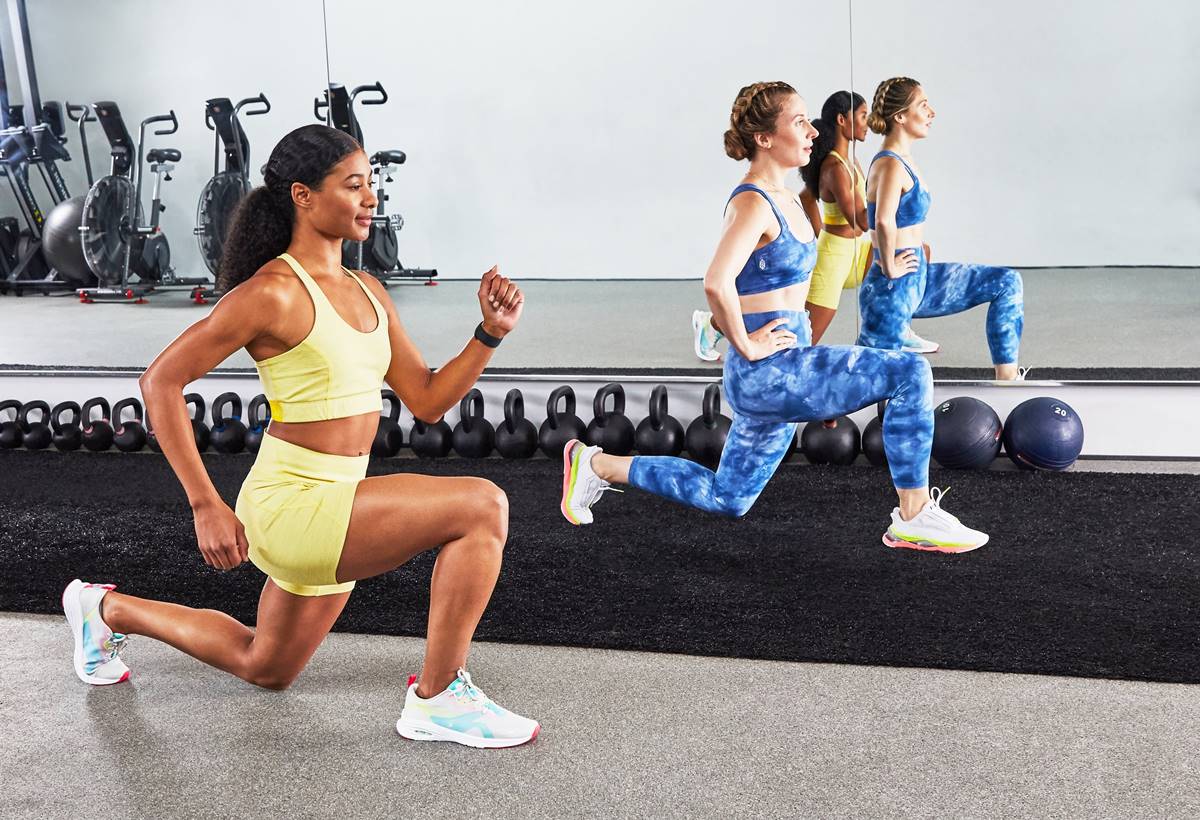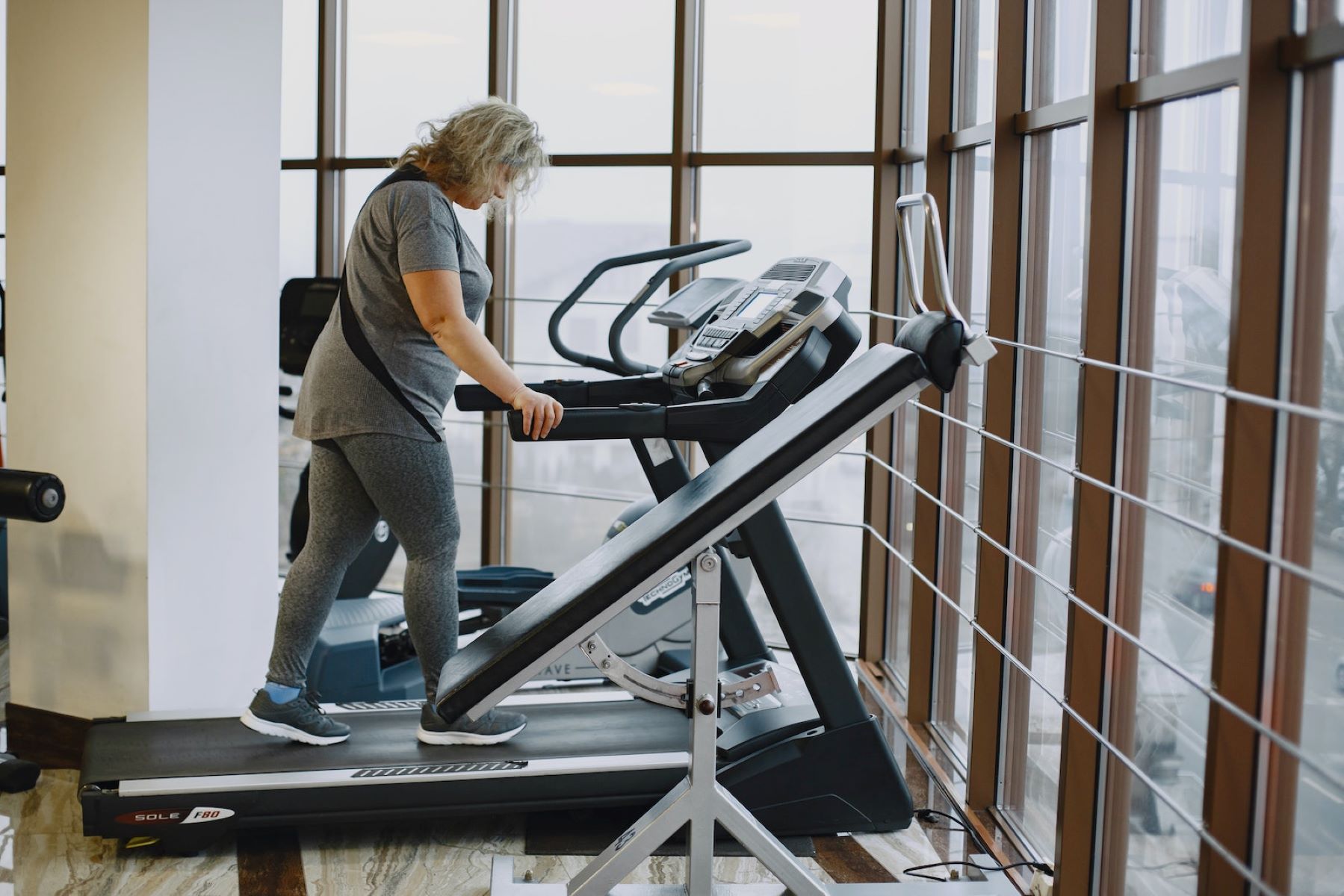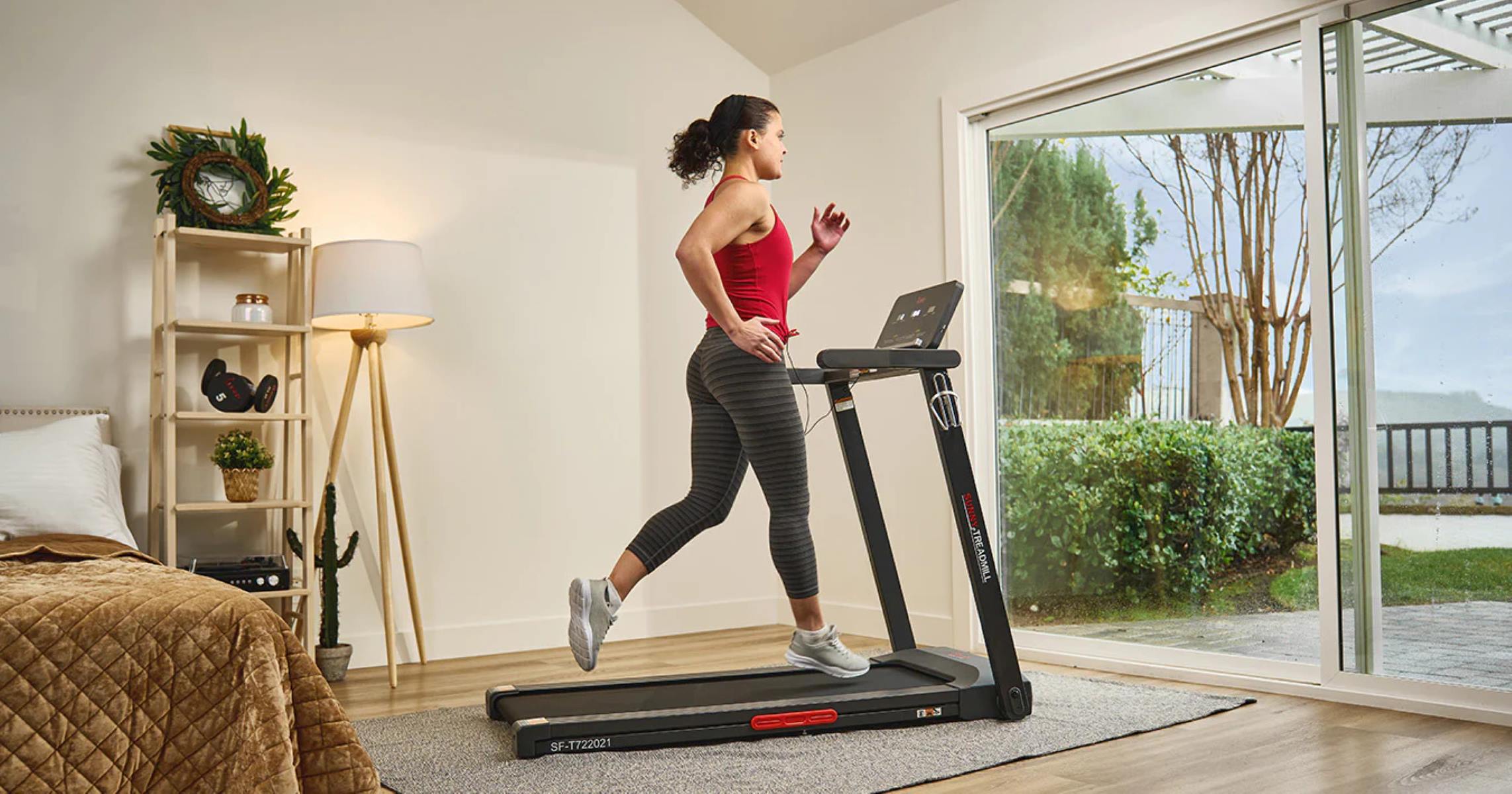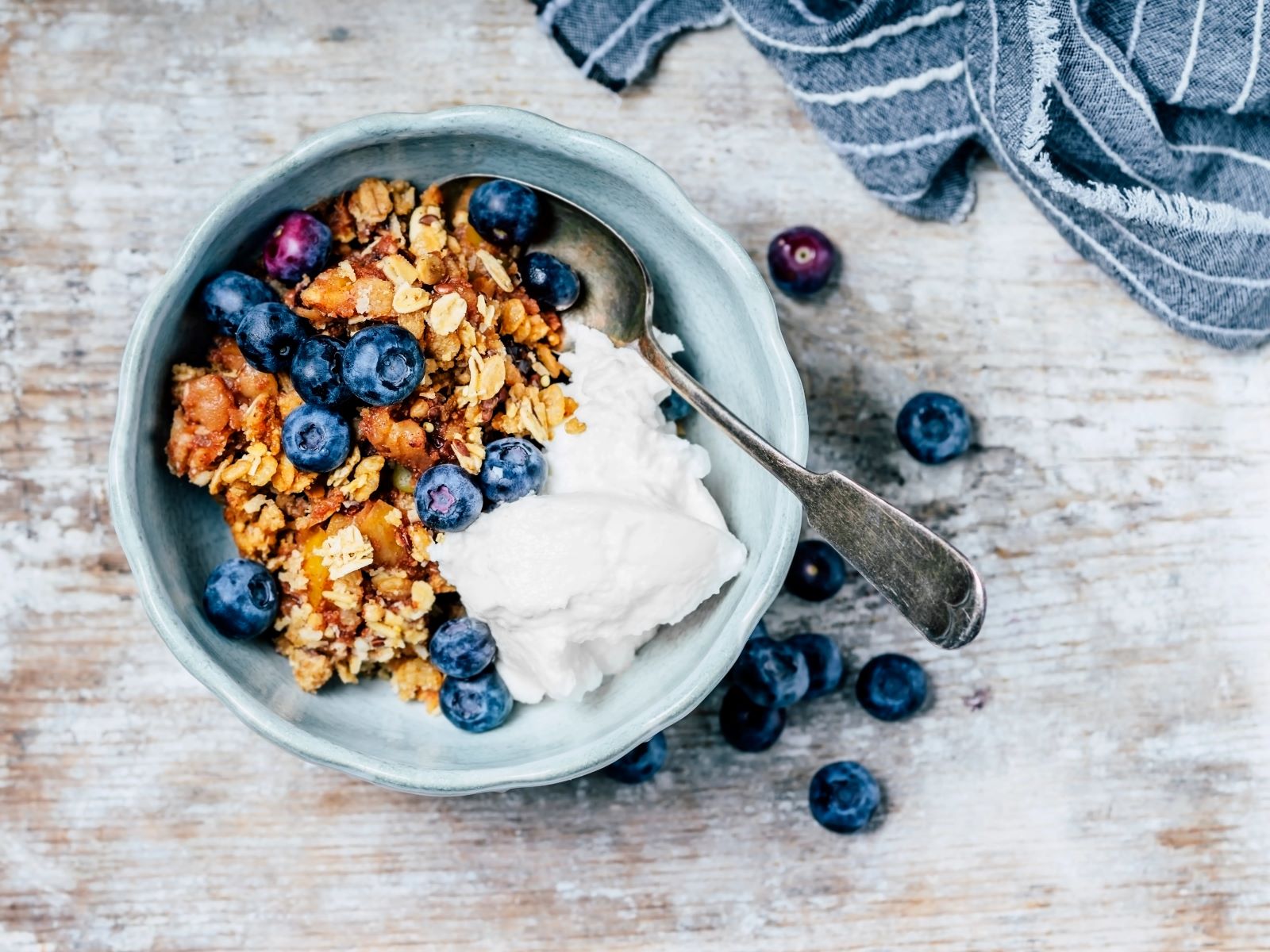

Featured
What Exercises To Do To Lose Weight
Published: October 8, 2023
Introduction
Losing weight and maintaining a healthy lifestyle is a common goal for many individuals. While there are various methods to achieve this, exercise plays a crucial role in the weight loss journey. Engaging in regular physical activity not only helps burn calories but also improves overall fitness and boosts metabolism.
Choosing the right exercise for weight loss can seem overwhelming given the numerous options available. However, with a little guidance, you can find the right exercise routine that suits your preferences, goals, and fitness level. In this article, we will explore different types of exercises that can aid in weight loss and provide you with the information you need to make an informed decision.
Before diving into specific exercise types, it’s important to note that weight loss is not solely reliant on exercise. A holistic approach including a balanced diet and lifestyle modifications is essential for long-term success. However, exercise is a key component to help accelerate weight loss, improve cardiovascular health, and build strength.
Additionally, it’s crucial to consult with a healthcare professional or a certified fitness trainer before starting any new exercise regimen, especially if you have pre-existing health conditions.
Now, let’s dive into the different types of exercises that can aid in weight loss and help you achieve your fitness goals.
Choosing the Right Exercise for Weight Loss
When it comes to losing weight, it’s important to find exercises that you enjoy and that align with your fitness level. This will not only keep you motivated but also make it easier to stick to a regular exercise routine. Here are some factors to consider when choosing the right exercise for weight loss:
- Personal Preferences: Think about activities that you enjoy, whether it’s dancing, swimming, cycling, or playing a sport. By selecting exercises that you find enjoyable, you’ll be more likely to stick with them in the long run.
- Fitness Level: Consider your current fitness level. If you’re just starting out, it’s best to begin with low-impact exercises and gradually increase the intensity as your fitness improves. This will help prevent injuries and maintain a sustainable workout routine.
- Time Commitment: Assess the amount of time you can dedicate to exercise. If you have a busy schedule, choosing exercises that can be done in shorter bursts, such as high-intensity interval training (HIIT), can be more efficient and still yield great results.
- Weight Loss Goals: Set realistic and attainable weight loss goals. Keep in mind that losing 1-2 pounds per week is considered a healthy rate of weight loss. Align your exercise choices with these goals to ensure you’re on the right track.
Remember that variety is key when it comes to exercise. Incorporating a combination of aerobic exercises, strength training, and flexibility exercises can help maximize weight loss and overall fitness. The next sections will explore some popular types of exercises that can aid in weight loss and provide a balanced workout routine.
Cardiovascular Exercises
Cardiovascular exercises, also known as aerobic exercises, are highly effective for weight loss. These exercises elevate your heart rate, burn calories, and improve cardiovascular health. Here are some popular cardiovascular exercises that can help with weight loss:
- Running or Jogging: Running or jogging is a simple yet effective form of cardiovascular exercise. It can be done outdoors or on a treadmill, and it helps burn a significant amount of calories while improving endurance.
- Cycling: Cycling is a low-impact exercise that can be done outdoors or on a stationary bike. It targets the lower body muscles and is an excellent option for individuals with joint issues.
- Swimming: Swimming is a full-body workout that is easy on the joints. It engages multiple muscle groups and can help burn calories while improving cardiovascular fitness.
- Dancing: Dancing is a fun way to get moving and burn calories. Whether it’s Zumba, hip-hop, or salsa, dancing offers a variety of styles to choose from and can be an enjoyable cardiovascular exercise.
- Jumping Rope: Jumping rope is a simple yet intense cardiovascular exercise that can be done anywhere. It not only burns calories but also improves coordination and cardiovascular fitness.
To achieve optimal results, it’s recommended to engage in cardiovascular exercises for at least 30 minutes, five days a week. However, if you’re just starting out, you can gradually increase the duration and intensity of your workouts to avoid overexertion or injury. Additionally, incorporating interval training (alternating between high-intensity and low-intensity exercises) can boost calorie burn and improve fitness.
Remember to warm up before starting any cardiovascular exercise and cool down afterward to prevent muscle strain and promote recovery. Stay hydrated throughout your workouts and listen to your body’s signals to prevent overexertion. With consistent effort and dedication, cardiovascular exercises can help you achieve your weight loss goals while improving your overall fitness level.
Strength Training Exercises
Strength training exercises are essential for weight loss as they help build lean muscle mass, increase metabolism, and improve overall strength and tone. Contrary to common misconceptions, strength training does not necessarily mean bulking up. It can be tailored to suit different fitness levels and goals. Here are some effective strength training exercises for weight loss:
- Bodyweight Exercises: Exercises such as push-ups, squats, lunges, and planks are effective ways to build strength using your own body weight. These exercises engage multiple muscle groups and can be done anywhere without the need for equipment.
- Dumbbell or Barbell Exercises: Incorporating dumbbells or barbells into your workout routine can add resistance and intensity. Exercises such as bicep curls, shoulder presses, deadlifts, and bench presses target specific muscle groups and help build strength and definition.
- Resistance Band Exercises: Resistance bands are versatile and affordable tools that can be used for a full-body strength training workout. They provide resistance throughout the movement and engage muscles to promote strength and endurance.
- Weight Machines: Utilizing weight machines at the gym can provide targeted resistance for specific muscle groups. Machines such as leg press, chest press, and lat pulldown offer stability and control while challenging muscles.
When incorporating strength training exercises into your weight loss routine, aim for at least two to three sessions per week. Focus on working different muscle groups on separate days to allow for adequate rest and recovery. It’s important to gradually increase the intensity and weight as your strength improves to continue challenging your muscles and promoting progress.
Remember to maintain proper form and technique during strength training exercises to prevent injuries. If you’re new to strength training, consider working with a certified personal trainer who can guide you and ensure you’re performing exercises correctly.
Incorporating strength training exercises not only helps with weight loss but also boosts your metabolism, improves posture, and enhances overall body composition. By building lean muscle mass, you’ll burn more calories even at rest, making weight management easier in the long run.
High-Intensity Interval Training (HIIT)
High-Intensity Interval Training (HIIT) is a popular exercise method that involves short bursts of intense exercise followed by periods of active recovery. This type of training is highly effective for weight loss as it helps burn calories, increase aerobic capacity, and boost metabolism. Here’s how HIIT works and why it’s beneficial for weight loss:
- Short, Intense Workouts: HIIT workouts typically last 10-30 minutes, making them perfect for individuals with busy schedules. The short duration is compensated by the high intensity, as these workouts push you to your limits and maximize calorie burn.
- Elevated Metabolism: HIIT workouts stimulate the production of human growth hormone (HGH), which helps increase the body’s metabolism and promote fat burning even after the workout is over. This means you continue to burn calories long after you’ve finished exercising.
- Variety of Exercises: HIIT workouts can consist of a variety of exercises, including bodyweight exercises, cardio drills, and even using equipment like kettlebells or medicine balls. The constant variation keeps the workouts interesting and prevents boredom.
- Improved Cardiovascular Fitness: HIIT workouts challenge your cardiovascular system and improve your aerobic capacity. Over time, this can lead to increased endurance and improved overall fitness.
To incorporate HIIT into your weight loss routine, choose exercises that engage multiple muscle groups and alternate between intense bursts of activity and active recovery. For example, you can perform 30 seconds of high-intensity exercises, such as burpees or mountain climbers, followed by 30 seconds of lower intensity exercises like jogging or walking. Repeat this cycle for the desired duration of your workout.
It’s important to note that HIIT workouts are highly intense and may not be suitable for everyone, especially those with underlying health conditions or joint issues. If you’re new to HIIT, start gradually and listen to your body. Allow yourself enough time to recover between sessions.
Adding HIIT to your exercise routine can provide a significant boost to your weight loss efforts. However, it’s important to balance HIIT workouts with proper rest and recovery. Aim for two to three sessions per week to give your body time to repair and adapt to the intense workouts.
Low-Impact Exercises
If you’re looking for exercises that are gentle on the joints while still being effective for weight loss, low-impact exercises are an excellent choice. These exercises minimize stress on the joints while providing cardiovascular benefits and calorie burning. Whether you’re a beginner, have joint issues, or are recovering from an injury, here are some low-impact exercises to consider:
- Walking: Walking is a simple, accessible, and effective low-impact exercise. It can be done indoors on a treadmill or outdoors, and it promotes cardiovascular health, strengthens the muscles, and burns calories.
- Elliptical Training: Using an elliptical machine provides a low-impact workout that mimics the motion of walking or running without causing excessive stress on the joints. It engages the entire body, burns calories, and improves cardiovascular fitness.
- Swimming: Swimming is a fantastic low-impact exercise that works the entire body. The water’s buoyancy reduces stress on the joints, making it ideal for individuals with joint problems or those who prefer a non-weight-bearing exercise option.
- Cycling: Cycling, whether on a stationary bike or outdoor bicycle, is a low-impact exercise that strengthens the lower body and burns calories. It’s an excellent option for individuals with knee or hip issues.
- Yoga: Yoga combines gentle movements, stretching, and relaxation techniques. It improves flexibility, balance, and strength while promoting relaxation and stress reduction.
- Pilates: Pilates focuses on core strength, flexibility, and body awareness. It incorporates controlled movements and precise alignment, making it a low-impact exercise suitable for all fitness levels.
While low-impact exercises may not burn as many calories as high-impact activities, they still contribute to weight loss and overall fitness. The key is to maintain consistency and gradually increase the intensity or duration of your workouts. These exercises can also be combined with other forms of exercise to create a well-rounded fitness routine.
Regardless of your fitness level, low-impact exercises offer numerous benefits, including improved cardiovascular health, increased strength and flexibility, and reduced risk of injury. It’s important to listen to your body, modify the exercises as needed, and always prioritize correct form to maximize the benefits of low-impact workouts.
Cross Training
Cross training is a training method that involves incorporating different types of exercises and activities into your fitness routine. It is a versatile approach that not only helps with weight loss but also improves overall fitness, prevents plateaus, and reduces the risk of overuse injuries. Here’s why cross training can be beneficial and some examples of cross training exercises:
- Variety of Movements: Cross training involves engaging in a variety of movements, which helps work different muscle groups and prevents repetitive strain. This diverse range of exercises challenges the body in different ways and promotes overall strength and conditioning.
- Increased Calorie Burn: By engaging in different exercises and activities, you can boost your calorie burn. Each type of exercise targets different muscle groups and requires varying levels of energy expenditure, helping to increase overall calorie expenditure and enhance weight loss.
- Enhanced Overall Fitness: Cross training improves cardiovascular fitness, muscular strength, flexibility, and balance. By combining activities such as cardio, strength training, and flexibility exercises, you can achieve a well-rounded fitness routine and improve overall physical performance.
Here are some examples of cross training exercises that you can incorporate into your routine:
- Running or Jogging: Running can be combined with other exercises to create a well-balanced workout routine. For example, you can alternate running with strength training or yoga sessions to challenge different muscle groups.
- Swimming: Swimming can be combined with strength training exercises such as bodyweight exercises or resistance band workouts to create a comprehensive cross training routine. This combination helps build strength and stamina while providing a low-impact cardiovascular workout.
- Group Fitness Classes: Participating in group fitness classes like Zumba, kickboxing, or boot camp workouts is an excellent way to add variety to your cross training routine. These classes often incorporate a mix of cardio, strength training, and flexibility exercises to provide a comprehensive workout.
- Circuit Training: Circuit training involves performing a series of exercises with little to no rest in between. You can alternate between cardio exercises, strength training exercises, and active recovery exercises to create an effective cross training routine.
With cross training, the possibilities are endless. Experiment with different activities and exercises to keep your workout routine fresh and exciting. Aim to include a mix of cardiovascular workouts, strength training, and flexibility exercises to target different aspects of fitness and achieve optimal results.
Combining Exercise with a Healthy Diet
When it comes to weight loss, exercise alone is not enough. It must be combined with a healthy and balanced diet to achieve the best results. Proper nutrition fuels your body and provides the necessary energy for workouts while promoting weight loss and overall well-being. Here are some tips on combining exercise with a healthy diet for effective weight loss:
- Calorie Balance: To lose weight, you need to create a calorie deficit by burning more calories than you consume. This can be achieved by incorporating regular exercise into your routine and making mindful food choices to maintain a balanced calorie intake.
- Focus on Whole Foods: Opt for nutrient-dense whole foods such as fruits, vegetables, lean proteins, whole grains, and healthy fats. These foods provide essential vitamins, minerals, and fiber while keeping you satisfied and supporting your weight loss efforts.
- Portion Control: Pay attention to your portion sizes to avoid overeating. Use smaller plates and practice mindful eating, taking the time to savor your meals and listen to your body’s hunger and fullness cues.
- Hydration: Stay hydrated by drinking plenty of water throughout the day. Proper hydration supports optimal exercise performance, aids in digestion, and helps control appetite.
- Balance Macronutrients: Aim to include a balance of carbohydrates, proteins, and fats in your diet. Carbohydrates provide energy for workouts, protein aids in muscle repair and growth, and healthy fats support overall health and satiety.
- Pre- and Post-Workout Nutrition: Fuel your body before and after workouts with appropriate snacks or meals. Consuming a combination of carbohydrates and protein before exercise provides energy, while post-workout meals or snacks aid in muscle recovery and replenish glycogen stores.
- Mind Your Snacking: Be mindful of snacking habits and choose healthier options such as fruits, nuts, yogurt, or vegetable sticks instead of sugary and processed snacks. Snack smart to avoid undoing your exercise efforts.
Remember, it’s important to consult with a registered dietitian or nutritionist to create a personalized meal plan that suits your individual needs and goals. They can provide guidance on portion sizes, specific nutrient requirements, and help you establish healthy eating habits.
By combining regular exercise with a well-balanced diet, you create a powerful synergy that supports weight loss and overall health. Make sustainable lifestyle changes that you can maintain in the long run, rather than relying on quick-fix diets or extreme exercise regimens. A holistic approach ensures that you’re nourishing your body, fueling your workouts, and achieving sustainable weight loss results.
Creating a Balanced Exercise Routine
To achieve maximum results and maintain overall fitness, it’s important to create a balanced exercise routine that incorporates various types of exercises. A balanced routine not only helps with weight loss but also improves strength, cardiovascular health, flexibility, and overall well-being. Here are some tips to create a well-rounded exercise routine:
- Cardiovascular Exercises: Include cardiovascular exercises such as running, cycling, swimming, or dancing to improve cardiovascular fitness and burn calories. Aim for at least 150 minutes of moderate-intensity cardio exercises or 75 minutes of vigorous-intensity cardio exercises per week.
- Strength Training: Incorporate strength training exercises to build lean muscle mass, increase metabolism, and improve overall strength. Aim for two to three strength training sessions per week, targeting different muscle groups with exercises such as squats, lunges, push-ups, and dumbbell or barbell workouts.
- Flexibility and Stretching: Don’t neglect flexibility exercises such as yoga or stretching routines. These exercises improve flexibility, range of motion, and posture. Dedicate a few days each week to stretching or participating in a yoga class.
- High-Intensity Interval Training (HIIT): Add HIIT workouts to your routine to boost calorie burn, improve cardiovascular fitness, and challenge your body in a short amount of time. Include two to three HIIT sessions per week, alternating between high-intensity exercises and active recovery periods.
- Low-Impact Exercises: Incorporate low-impact exercises like walking, swimming, or cycling to give your joints a break and vary the intensity of your workouts. These exercises offer cardiovascular benefits without excessive strain on the joints.
- Rest and Recovery: Allow your body enough time to rest and recover between workouts. This includes incorporating regular rest days into your routine, prioritizing sleep, and listening to your body’s signals to avoid overtraining and injuries.
To make your exercise routine enjoyable and sustainable, mix and match different types of exercises based on your preferences and fitness goals. Consider joining group fitness classes, hiring a personal trainer, or using fitness apps to keep yourself motivated and engaged. Additionally, don’t be afraid to modify and adjust your routine as needed to suit your changing needs and abilities.
Remember, a balanced exercise routine is not solely focused on one type of exercise. It combines cardiovascular activities, strength training, flexibility exercises, and rest for optimal results. By incorporating various exercises into your routine, you’ll achieve a well-rounded fitness level, improve weight loss efforts, and experience overall health benefits.
Conclusion
In conclusion, exercise plays a crucial role in weight loss and overall health. By choosing the right exercises, you can maximize your weight loss efforts and achieve a balanced fitness routine. Cardiovascular exercises like running, swimming, and cycling help burn calories and improve cardiovascular health. Strength training exercises build lean muscle mass, boost metabolism, and improve strength. High-intensity interval training (HIIT) workouts are effective for calorie burning and cardiovascular fitness. Low-impact exercises like walking, swimming, and yoga offer a gentler option while still promoting weight loss. Cross training combines different types of exercises to keep workouts varied and challenging. However, it is important to remember that exercise alone is not enough – it must be combined with a healthy diet to achieve sustainable weight loss. By focusing on whole foods, portion control, and proper hydration, you can fuel your body and support your fitness goals. Creating a balanced exercise routine that includes cardiovascular exercises, strength training, flexibility, and rest will help you achieve optimal results. So, lace up your sneakers, fuel your body with nutritious food, and embark on your weight loss journey with confidence and determination!









